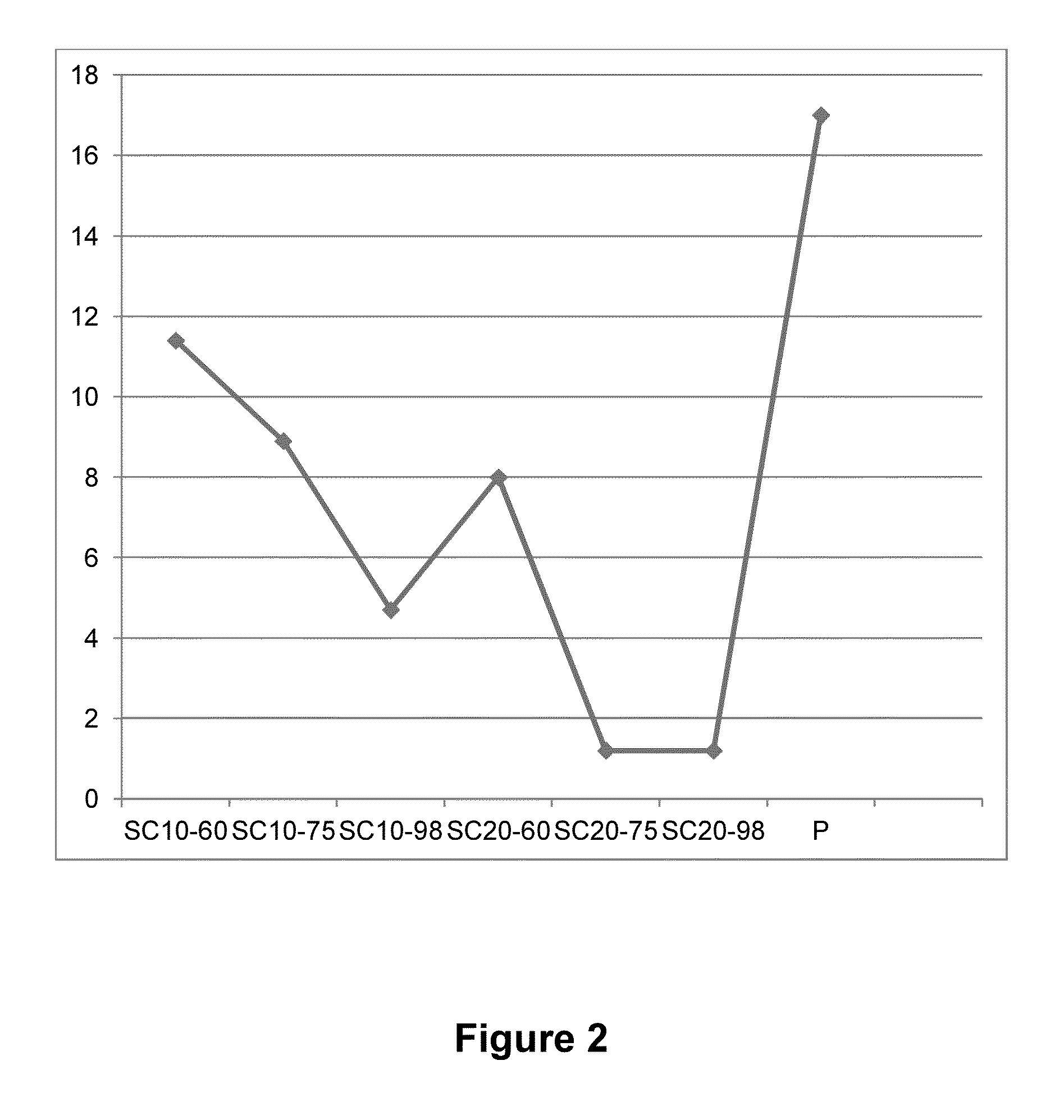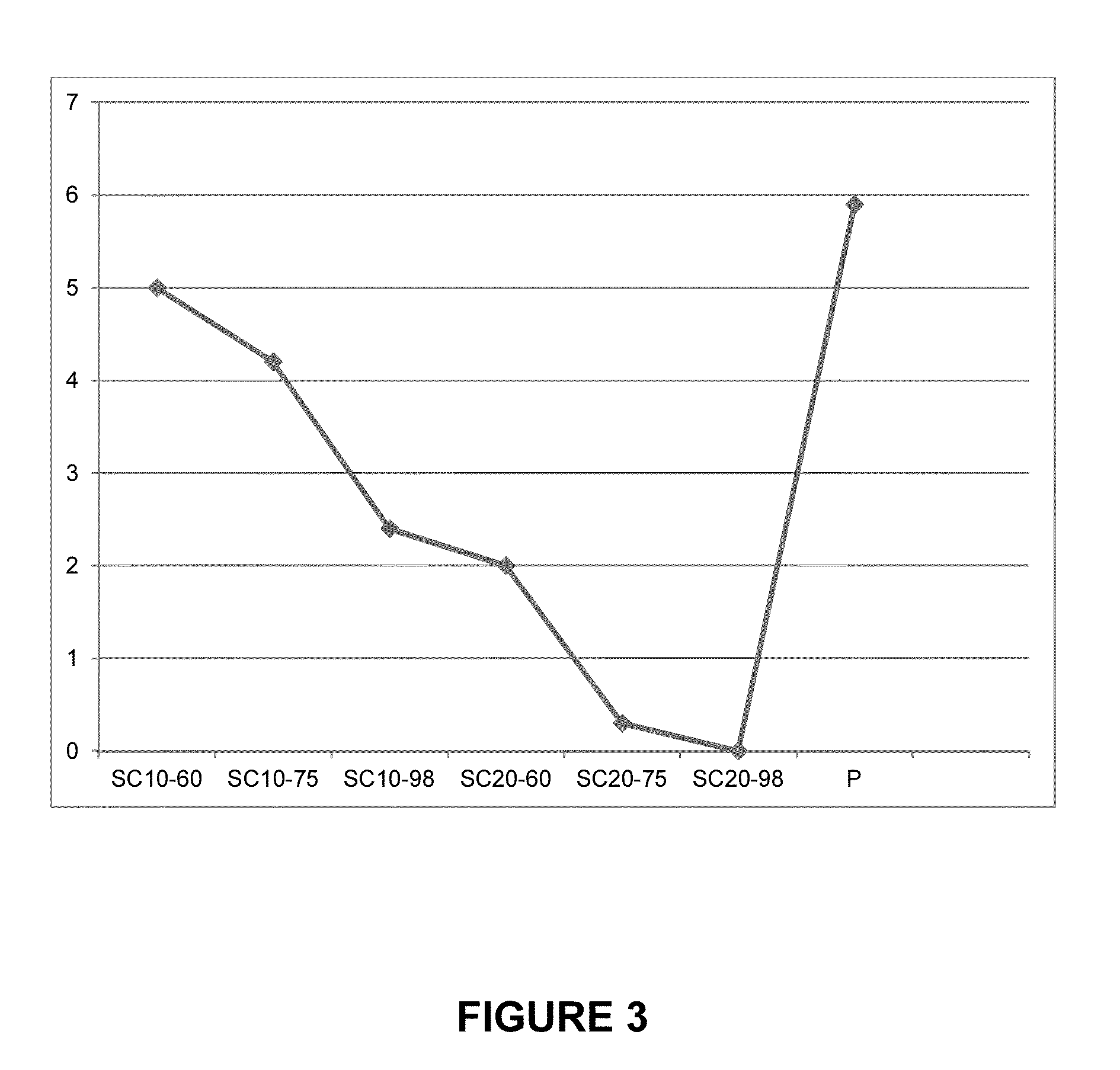Feline scratch marking semiochemicals
a semiochemical and feline technology, applied in the field of semiochemical compositions, can solve the problems of not being able to solve the problem of patents, not being able to solve problems, and difficult application of plastic nail caps, etc., and achieve the effect of preventing a cat from scratching
- Summary
- Abstract
- Description
- Claims
- Application Information
AI Technical Summary
Benefits of technology
Problems solved by technology
Method used
Image
Examples
example 1
A Population Study
[0082]The cats that were chosen for this study based on the major genetic branching and ethnic classification of cats. The three major types of cats that were chosen for this study were European cats, Siamese cats and Persian cats. The sex of the cats that were chosen for this study included females (F), castrated females (CF), males (M) and castrated males (CM).
[0083]The cats constituted twelve groups with five cats per group. This population was considered as an initial survey. The results obtained showed a large heterogeneity in the secretion compositions based either on the individual cats or their race. Therefore the sampling had to be repeated with a larger cat population.
[0084]Besides the criteria of race and sex, other criteria were established to be included in the dozen groups which were: (1) registered in a studbook kept by one of the recognized breeding clubs; (2) have an age between 8 months and 5 years; (3) did not receive any medical treatment for th...
example 2
Isolation and Analysis to Identify the Semiochemical Associated with Cat's Scratching
[0096]Isolation
[0097]To assure that the secretions were taken which were spontaneously deposited by the cats a device was used that permitted to obtain the scratches on a support that was compatible with the requirements of chemical analysis.
[0098]The samples were taken during a period of 48 hours by fixing a surgical compress using latex examining gloves on part of the surface lacerated by the cat. The lacerated surface was divided in two in the sense of the height. One of the two halves was recovered with the aid of a sterile compress. To ensure that there was not any dissymmetry in the deposit of the secretion, the sample was collected alternatively half left and half right at each site for two days to collect the pheromones.
[0099]The sterile compresses that were collected were replaced every 6 hours during the day at the same hour that the owners went to sleep and woke up. This represented 9 com...
example 3
Testing of the Structural Analogues of the Cat Scratching Semiochemical
[0113]70 cats were tested in this study using the solution SC10-98, SC10-75, SC10-60, SC20-98, SC20-75 and SC20-60, which are structural analogues of the feline scratch marking pheromone. SC10-98 had 10% of the fraction Sc1 (See, Table III above) and 98% linoleic acid; SC10-75 had 10% of the fraction Sc1 (See, Table III above) and 75% linoleic acid; SC10-60 had 10% of the fraction Sc1 (See, Table III above) and 60% linoleic acid; SC20-98 had 20% of the fraction Sc1 (See, Table III above) and 98% linoleic acid; SC20-75 had 20% of the fraction Sc1 (See, Table III above) and 75% linoleic acid; and SC20-60 had 20% of the fraction Sc1 (See, Table III above) and 60% linoleic acid.
[0114]Ethanol was used as a placebo, which was the same solvent used in the solutions. This study was not conducted as a double blind study since although the six analogues could not be distinguished by the human nose, the ethanol could in fac...
PUM
 Login to View More
Login to View More Abstract
Description
Claims
Application Information
 Login to View More
Login to View More - R&D
- Intellectual Property
- Life Sciences
- Materials
- Tech Scout
- Unparalleled Data Quality
- Higher Quality Content
- 60% Fewer Hallucinations
Browse by: Latest US Patents, China's latest patents, Technical Efficacy Thesaurus, Application Domain, Technology Topic, Popular Technical Reports.
© 2025 PatSnap. All rights reserved.Legal|Privacy policy|Modern Slavery Act Transparency Statement|Sitemap|About US| Contact US: help@patsnap.com



